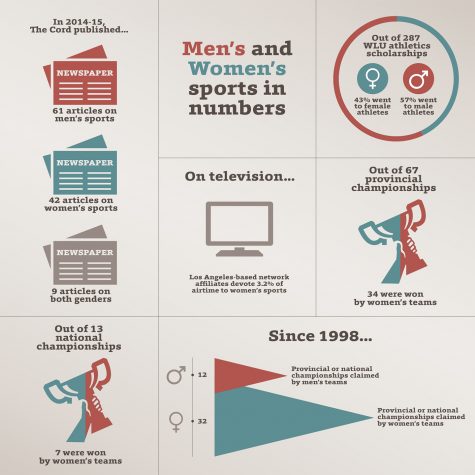Women’s Sports Aren’t Appreciated Enough Compared to Their Male Counterparts

September 3, 2021
NBA vs WNBA, men’s soccer vs women’s soccer, baseball vs softball, the list goes on and on. It seems to be a constant debate between both adults and teenagers alike trying to determine which sport or version of their sport is superior. But settling the debate is what’s troubling about it. For some it might be easy to pit men versus women in their respective sport and settle it that way.
But men, on average, are stronger than women due to an increase in total muscle and body mass, giving them a physical advantage. And this fact alone would lead people to say that’s why men’s sports are inherently better and more difficult than women’s. This physical advantage tends to make men’s sports obviously more physical and sometimes competitive, leading to a preference from many people to watch a men’s game opposed to a women’s game. I myself am sometimes guilty of this, even if it’s a blowout football game vs a neck and neck basketball game. Of course this goes to say that ultimately you should watch you want no matter the gender playing the sport.

Although physicality can make the sports more competitive and entertaining, physicality doesn’t determine the sport’s difficulty or entertainment value despite what some people may say. A close football game full of hard hitters knocking each other around will always be exciting and fun for me, but I also find tactical, slow paced matches to be quite entertaining as well. It’s almost like a form of art, something to be admired in a way. Women’s sports often tend to play out this way, due to a lack of physicality as mentioned before. As a result, games and matches often become a scheming match up, leading to a battle of the minds between both coaches and players. Although watching these games with an open mind allows you to grow an appreciation for the women who play the game and the game itself, it comes at a cost to the women themselves.
Because of the mindset many people have when it comes to watching women’s sports, media as a result covers women much more less than men, and they do it with lower quality as well. A study done by Purdue University journalist Cheryl Cooky found that women receive the same media coverage in sports today as they did thirty years ago. This has caused many problems for all women’s sports, including inequality in pay to their male counterparts and a lack of growth in the professional field of those sports. It’s very rare that you’ll see a professional softball or volleyball game on cable TV barring you pay for some lucrative package that gives you a channel that televises such games. Outside of the Olympics, women’s sports are very rarely if at all nationally televised. But, in the instance a women’s sport is televised, I challenge you to try watching it with an open mind. Perhaps you’ll find that you actually enjoy watching it, or like me, you could develop a new appreciation for a sport that we always see being played the same way by men time and time again, over and over.




Kylee | Sep 17, 2021 at 3:30 pm
I love this article.